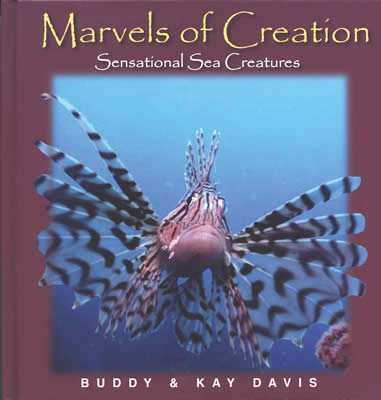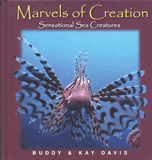Anal fin.................. this single fin is found at the rear of the fish.
Axil........................ the place where the pectoral or ventral fin join the body of the fish.
Bar......................... marking on a fish that is vertical.
Belly....................... the underside of the fish body.
Brackish.................. water that has a mixture of saltwater and freshwater.
Burrow................... a hole in the ground at the bottom made by an animal for shelter and inhabitation.
Camouflage............. coloration that blends in with the background or environment.
Carnivore................ something that feeds on other animals.
Cartilage................. clear tissue that makes up most of the skeleton on young fish that changes into bone when the fish matures. Cartilage on sharks and rays does not turn into bone.
Caudal fin............... the tail fin.
Caudal peduncle...... the base of the tail of a fish.
Cleaning station...... the place on the reef where fish come to be cleaned of parasites by small parasite-eating fish.
Continental shelf.... the bottom of the ocean from the shore to where it drops off quickly.
Crevice.................... the place in the reef where there is a split or opening where fish can find shelter.
Crustaceans............. invertebrates such as crabs, lobsters, shrimp, etc. which have a hard outer skeleton.
Diurnal................... something that is active during the day and rests at night.
Dorsal fin............... one or more fins that are along the back of the fish.
Estuary.................... the place where a river or stream flows into the sea.
Euryphagous............ eating a large variety of foods.
Extinct.................... something that no longer exists.
Family..................... a group that has anatomical similarities.
Finlet...................... small fins located behind the dorsal or anal fins.
Forked.................... a tail that is divided into two equal parts.
Gape....................... the place at the rear of the mouth where the upper and lower lip joins.
Gill........................ the membrane that serves the fish as lungs, located at each side of the head.
Gill cover............... the covering of the gills made up of a flap of bones and skin.
Habitat................... the place where a species lives, grows, and survives.
Herbivore................ an animal that eats vegetation most of the time.
Invertebrate............. an animal that does not have a spinal column.
Juvenile................... a fish in early stages of development that has the appearance of an adult.
Larva...................... the early stage of a fish after it hatches until it reaches the juvenile stage.
Lateral line.............. the sensory organ of a fish.
Lobe........................ the extension of the tail or fin that is rounded or pointed.
Mollusk.................. invertebrates such as clams, snails, octopuses, shellfish, and squid where their shell is not segmented.
Nape....................... the area between the eyes and the dorsal fin.
Nocturnal.............. an animal that is mostly active during the night and resting during the day.
Offshore................. away from the shoreline where the water is very deep.
Omnivore................ an animal that eats both meat and vegetables.
Ovoviviparous......... eggs that remain in the body of the female until they hatch and are born alive.
Pectoral fin............. the fin that is located to the rear of the gills
Pelvic fin................. the same as the ventral fin which is located on the belly of the fish.
Pharynx.................. where the gills are located at the back of the mouth.
Plankton................. very small plants and animals that drift in the ocean including jellyfish and very young fish of some species.
Polyps..................... little invertebrate animals that constitute marine growths.
Ray......................... the bony support frame of the fins.
Scales...................... semi-transparent plates like fingernails that grow from the skin to cover the fish.
Scavenger................ something that feeds on dead animals that it has not killed.
School.................... a group of fish that travel close together.
Scutes..................... thick scales that form a ridge.
Serration................. saw-toothed edge.
Solitary................... being, living, or going alone.
Spawning................. the discharging of eggs by the female and sperm by the male.
Species..................... a group of animals or plants with similar characteristics, capable of interbreeding.
Spine....................... the stiff, sharp-pointed fin support.
Substrate................. the base on which animals or plants live.
Surge...................... the motion of the sea that makes the waves.
Swim bladder........... a gas-filled sac in the fish that allows it to keep vertical in the water.
Turbid water............ water that contains silt and other debris, making visibility very poor.
Undulate................ to bend in a wavy motion.
Ventral fin.............. same as pelvic fin, which is located on the belly of the fish.
Vertical fins............ includes the dorsal, anal, and tail of the fish.
Marvels of Creation: Sensational Sea Creatures
Brings the world of the sea alive in a unique and colorful way with photographs, a page of facts and commentaries.
Browse Kids BookRecommended Resources
- © 2024 Answers in Genesis
- Privacy Policy
- Contact
- About



